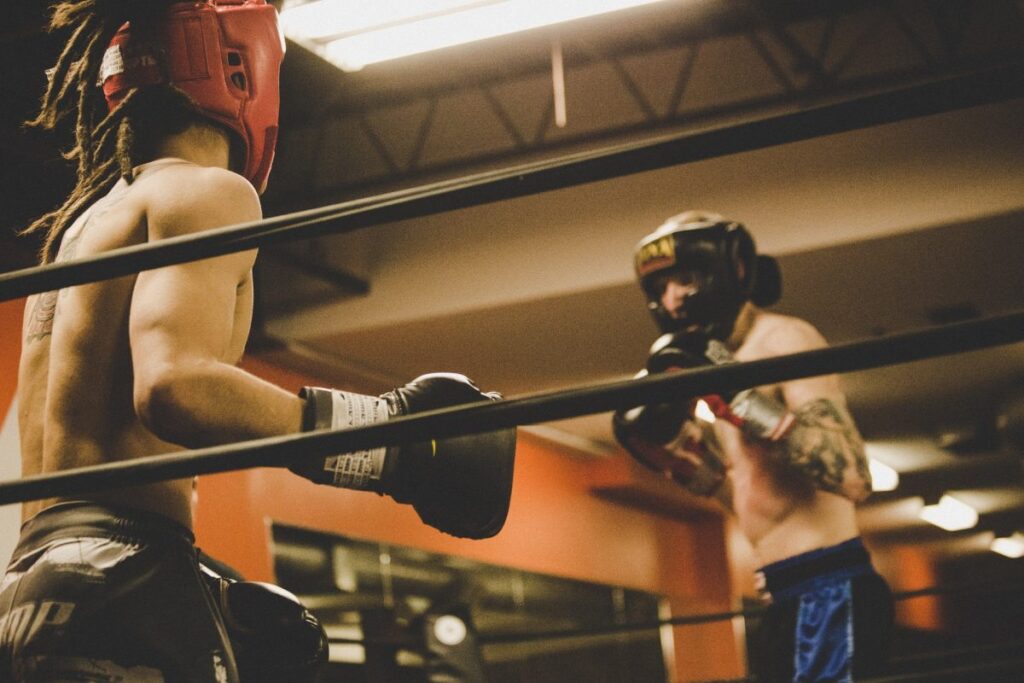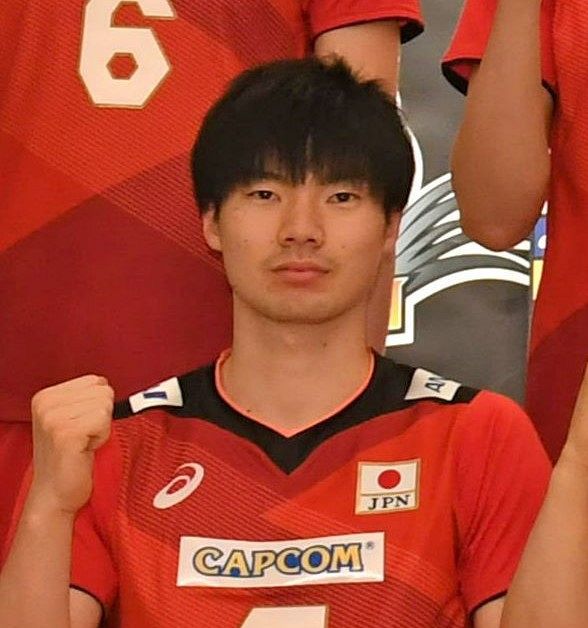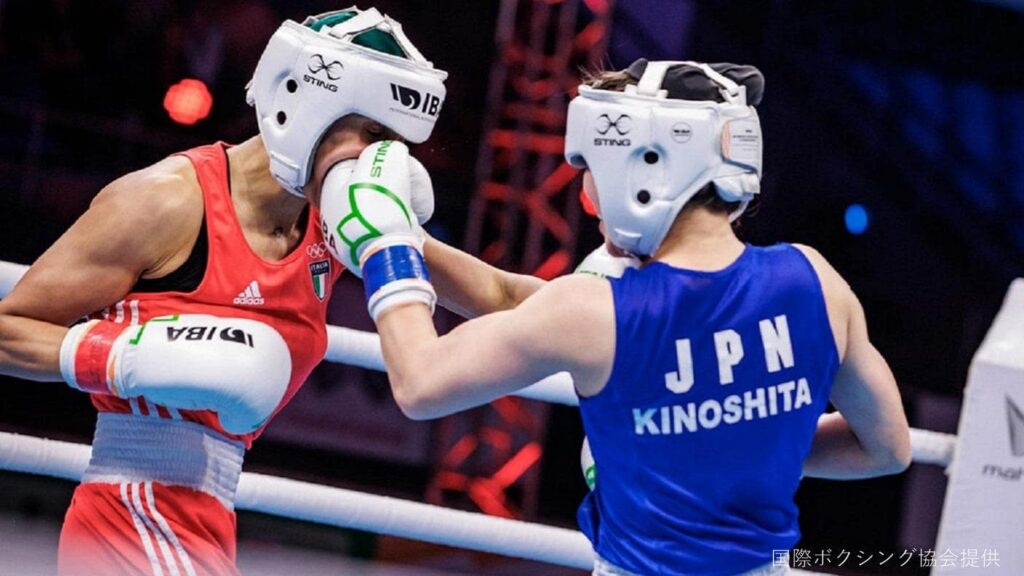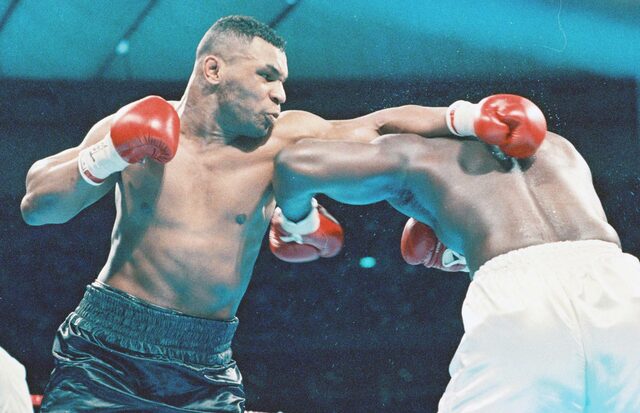![The key to victory in beach volleyball! A complete guide to the overhand pass [from beginners to advanced players]](https://planotatico.com/wp-content/uploads/2024/03/547922b507937b1df1237f2155310ba4-beach-volleyball-min.jpg)
The overhand pass plays an important role in the game of beach volleyball.
This technology is key to greatly influencing the flow of the game, smoothing team play, and creating scoring opportunities.
However, understanding and practicing the correct technique is essential to mastering an accurate and effective overhand pass.
This article provides detailed information for beginners to advanced players to improve their beach volleyball skills, from the basics of overhand passes to advanced techniques.
Perfecting the overhand pass will take your beach volleyball game to the next level.
Now start your journey to success in beach volleyball.
目次
Introduction: What is an overhand pass?
The overhand pass is one of the basic and important techniques in beach volleyball.
This technique involves placing your hands together above your head and spreading your fingers to control the ball and send it precisely where you want it to go.
Overhand passes are primarily used in various aspects of the game, such as serve receiving, setting up a teammate, and even converting from defense.
The importance of overhand passes
The accuracy of the overhand pass greatly influences the flow and strategy of the game in beach volleyball.
Accurate passing can create attacking opportunities and improve team coordination.
It also functions as an effective means of receiving strong serves, blocking the opposing team’s attacks and creating opportunities for your team to counterattack.
The overhand pass is important not only to return the ball to the opponent’s court, but also as a preparatory move for developing an offensive play.
A proper overhand pass lays the groundwork for the spiker to approach effectively and drive powerful and accurate spikes.
The importance of this technique to a team becomes apparent during games, and is often the key to winning or losing a game.
Improving your overhand passing technique is one of the basics for beach volleyball players.
Mastering this skill will give players more tactical options and greatly improve their performance as a team.
In the next section, we’ll dig deeper into the basic overhand passing technique.
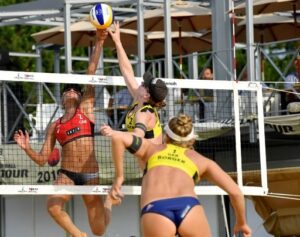
Basic overhand pass technique
Correct posture, hand shape, and contact with the ball are very important for a successful overhand pass.
Mastering these basics will improve your control of the ball and allow you to make more accurate and consistent passes.
Here, we will explain in detail the basic techniques that are essential for a successful overhand pass.
correct posture
- Foot position: Stand with your feet shoulder-width apart or slightly wider, with your knees slightly bent. This stable stance allows you to react quickly and effectively to the ball.
- Weight Distribution: Shifting your weight to your front foot at the moment of contact with the ball helps you control the direction and force of your pass.
hand shape
- Hand position and shape: Bring your hands together slightly in front of your head, with your fingers spread apart and wrapped around the ball. Keep your fingers evenly spaced and your palm facing the ball.
- Wrist Use: It’s important to keep your wrists flexible and use your wrist snap to add spin to the ball when passing. This allows you to increase the flight distance and accuracy of the ball.
How to contact the ball
- How to hit the ball: When making contact with the ball, use the pads of your fingers to push up the bottom half of the ball. The ball feels like it’s slipping out between your fingers, and you control it with your fingers instead of your palm.
- Timing: Passing the ball at a slightly elevated position rather than when it is at its lowest position allows for more effective power transfer. Also, making contact at this time helps you control the direction of the pass more precisely.
importance of practice
To improve your overhand passing technique, it is essential to practice repeatedly while being aware of correct posture, hand shape, and contact with the ball.
Also, practicing with a partner and experiencing passing from various distances and angles is essential for improving technique.
Mastering the basic overhand passing technique is the first step to improving your beach volleyball game.
By mastering these fundamentals, you will be able to respond to various situations during the game and develop team play more smoothly.
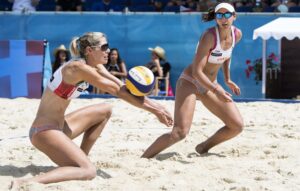
Application technology of overhand pass
After mastering the basic overhand passing technique, the next step is to apply it.
Various situations arise during the game, especially in beach volleyball. Application techniques for overhand passes are required in order to deftly receive the opponent’s attack and provide optimal setups to teammates.
Here we will introduce in detail how to apply the overhand pass and examples of its use to dominate the game.
offensive overhand pass
- Short Set: A short set is a quick, low pass near the net. Using this technique will make it easier to evade your opponent’s blocks and provide the spiker with an opportunity to attack.
- Long set: A long pass to the back or side of the court. The purpose is to break up the opponent team’s position and increase the variety of attacks.
defensive overhand pass
- How to send a free ball: If it is difficult to create an attacking opportunity, send the free ball to the opponent’s court. At this time, it is important to use overhand passes to target the opponent’s weak points or send the ball to areas they are not prepared for.
- Receive in emergencies: Use an overhand pass when it is difficult to receive normally in response to a strong serve or spike. By making full use of this technique, it is possible to control even difficult balls in a way that is advantageous for the team.
Overhand pass in special situations
- Passes that take into account the effects of wind: Wind is a big factor in beach volleyball, so you need to read the direction and strength of the wind when making overhand passes. The ball tends to be swept away when passing from upwind to downwind, so pass with more power and a lower trajectory.
- Passing from different angles: The overhand pass can be used effectively against the ball not only from the front, but also from the side or behind. This allows players to control the ball accurately even in limited space and time.
By learning the application technique of the overhand pass, players will be able to respond to various situations during the game.
By practicing and incorporating these techniques into your game, you will be able to improve both your team’s offensive and defensive capabilities.

How to practice overhand passes
The overhand pass is one of the most basic and important skills in beach volleyball.
To master this technique and use it naturally in the game, you need targeted practice drills.
Here we will show you how to practice to master an effective overhand pass.
1. Basic form practice
- Wall-based practice: Practicing against a wall is great for correcting your overhand passing form and for repeated practice. Stand facing the wall, perform an overhand pass to the wall, and pass the ball back as it bounces back. As you practice, pay attention to correct hand position, posture, and how to hit the ball.
2. Practice with a partner
- Mutual passing practice: Work in pairs with a partner and perform overhand passes to each other. The key is to gradually increase the distance and adjust the accuracy and force of the pass. Try passing from different angles or while moving.
3. Target practice
- Passing to targets: Practice with targets (cones, buckets, etc.) to improve your passing accuracy. Make passes towards the target from different distances and angles and see how close the ball gets to the target. This exercise is very effective in improving your passing control ability.
4. Practice passing while moving
- Pass while moving: In real games, there are many situations where you pass while moving, not just from a stationary state. Practice overhand passes while moving around the court to get used to passing at different speeds and directions.
5. Practice passing under pressure
- Practice with defense players: Assuming a real battle, we will practice passing with defense players. By making accurate passes under pressure from your opponent, you can develop your mental strength during the game.
To improve your overhand passing technique, it is important to practice these regularly so that you are prepared to pass in a variety of situations.
With practice, you will be able to pass more accurately and more effectively during the game.

Common mistakes and how to fix them
The overhand pass is a basic technique in beach volleyball, but if not done correctly it can negatively impact your game.
Here we will discuss common mistakes made when performing overhand passes and how to correct them.
1. Inaccurate hand position
Mistake: Inaccurate hand position and lack of consistent control of the ball.
How to fix: Practice positioning your hands correctly before making the pass. Place your palms facing the ball and spread your fingers so they cover both sides of the ball. Practice hitting the ball against the wall to check the position of your hands and repeatedly practice passing with correct form.
2. Insufficient knee bending
Mistake: Not bending his knees enough and not using his lower body strength to pass.
How to fix it: During the overhand pass, bend your knees slightly to use the power from your lower body. Practice by paying attention to how you bend your knees so that you can smoothly transfer the power from your lower body to your upper body.
3. Long contact time with the ball
Mistake: Touching the ball too long, making the pass unstable.
How to fix it: Use your hands and fingers to make short snaps when touching the ball. It is important to learn to push the ball up using the pads of your fingers rather than your palms. By performing passes with short contact times, you can achieve more accurate passes.
4. Improper ball throw position
Mistake: Passing the ball in front of or to the side of the body instead of over the head, causing a loss of direction.
How to fix it: When passing the ball, try to touch the ball directly above or slightly in front of your head. By passing from this position, you can send the ball more accurately in the desired direction. Practice with your partner, keeping in mind the position of the pass, so that you can pass in the appropriate position.
5. Lack of follow-through
Mistake: Lack of follow-through when passing, and no power is conveyed in the pass.
How to fix: After passing, follow through by extending your hand in the desired direction. By being conscious of your follow-through, you can increase the accuracy and power of your passes. Make a conscious effort to follow through when practicing wall strikes or practicing with a partner.
6.Body balance is unstable
Incorrect: Unbalanced body when passing, resulting in inconsistent pass direction and strength.
How to fix it: Before you pass, increase your lower body stability by placing your feet shoulder-width apart and slightly bending your knees. By maintaining a posture that helps you maintain balance, you will be able to make more accurate passes. Practice with balance in mind and aim for a stable pass.
Improper eye position
Mistake: When passing, your eyes are looking elsewhere instead of at the ball, which reduces the accuracy of your pass.
How to fix it: When passing, it’s important to see the ball all the way through. By keeping your eyes focused on the ball and following it until the moment of passing, you can make more accurate passes. Practice paying attention to your line of sight and aim for accurate passes.
Improper ball release timing
Mistake: Releasing the ball too early or too late, reducing the accuracy of the pass.
How to fix it: When passing, it’s important to know exactly when to push the ball up. Practice with release timing in mind and find the optimal moment to push the ball up. Accurate timing can improve the accuracy and control of your passes.
Uneven pass strength
Mistakes: Inconsistent pass strength, sometimes too strong, sometimes too weak.
How to fix it: Controlling your hand usage and arm swing is key to adjusting the strength of your passes. Learn how to pass the ball accurately with the necessary strength by practicing with a focus on the amount of force you use. Practice passing for different distances and be able to pass with consistent force.
By being aware of and practicing these common mistakes and how to correct them, you can improve your overhand passing technique in beach volleyball.
Practicing repeatedly with correct form is a shortcut to improving your skills.
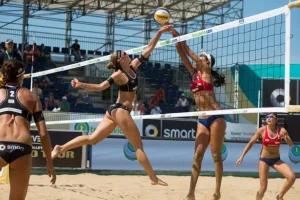
Overhand passing technique for advanced players
The overhand pass is a very important technique in controlling the game of beach volleyball and developing strategy.
Once you become an advanced player, you will be required to master basic techniques and then use even more advanced techniques and strategic use.
Here are some techniques for advanced players to use overhand passes to dominate the game.
precision pass
- Technique details : Maximize the accuracy of your passes and use it not only when your partner is in the optimal attacking position, but also to strategically move your opponent.
- How to fix it : Set a goal and practice making repeated passes to that goal. Improve your accuracy by using small targets and making precise passes towards them.
dynamic movement
- Technique Details : Master the on-the-move overhand pass and improve your ability to make accurate passes on the move.
- How to fix it : Practice passing while moving to improve your ability to pass while maintaining balance. In particular, practice exercises that combine forward, backward, left and right movements.
tactical pass
- Technique details : Read the flow of the game and make passes to exploit your opponent’s weaknesses. This is a technique that uses the opposing team’s positioning and movement to perform a pass that becomes the starting point for an attack.
- How to fix it : Learn the characteristics of the opposing team, such as through video analysis, and simulate those situations during practice. It is important to consciously perform passes that have tactical meaning in actual combat.
fast path
- Technique Details : Make quick passes to increase the tempo of the attack. It is especially effective for quick side changes and counter attacks.
- How to fix it : Practice passing speed to improve your ability to quickly handle the ball. Adjusting your timing and speed is key.
smart pass
- Technique Details : The ability to read the game and send a pass with the right strength and direction when needed. Uses passing wisely to create attacking opportunities.
- How to fix it : Practice a lot of game situations to develop your ability to identify the best path in different situations. Set up a specific scenario during practice and practice choosing the most effective path within it.
By mastering these advanced techniques, beach volleyball players can have more influence in the game.
Developing not only advanced techniques but also strategic thinking will pave the way to becoming an advanced student.

Summary: Master the overhand pass to conquer beach volleyball
The overhand pass in beach volleyball is a fundamental and essential technique for controlling the flow of the game and developing strategy.
Accurate overhand passes facilitate team play and create attacking opportunities, which can directly lead to winning or losing the game.
In this article, we have provided a concrete method to gradually improve your overhand passing technique from beginner to advanced.
How to fix it for beginners
- We’ve suggested fixes for common mistakes such as incorrect hand position, knee bending, ball contact time, ball throw position, and lack of follow-through . These are the foundation for accurate and powerful passes.
Techniques for advanced users
- For advanced players, we focused on more advanced techniques and tactics such as precision passing, dynamic movement, tactical passing, fast passing, and smart passing . By using these techniques, you will be able to strategically control the game and develop effective attacks against the opposing team.
The road to conquering beach volleyball
Improving your overhand passing technique is directly linked to improving your performance in beach volleyball.
It is important to improve your skills in stages, from basics to advanced techniques to advanced techniques.
Repeated practice with correct form, tactical thinking, and choosing the right pass depending on the situation can make a big difference in your beach volleyball play.
Master the overhand pass and establish your dominance in the world of beach volleyball. Learning and improving this technique will be the key to paving the way to victory.
